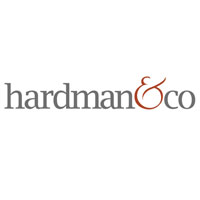Primary Health Properties PLC (LON:PHP) is the topic of conversation when Hardman and Co Analyst Mike Foster caught up with DirectorsTalk for an exclusive interview
Q1: Mike, I wanted to talk to you about Primary Health Properties, what can you tell me about PHP?
A1: Primary Health Properties is a REIT, real estate investment trust, investing exclusively in primary medical properties.
Primary means the first port of call for the public i.e. the general practitioner, and for the GP it’s good to have new properties because much of the estate is still converted houses which are not considered ideal, especially by growing practices.
It is good for HM Government because purpose-built can undertake some work done in hospitals and do it much more efficiently and cheaply. Often it would include tests where results could be received while the patient waits, and the GP can then diagnose further course of action.
There are other benefits if these surgeries expand into recovery care and other things which might reduce bed blocking.
For PHP it’s good because the leases are upward only rents, typically 20 years long.
Q2: Why does the government pay upward only rents?
A2: It’s in order that new developments are valued highly enough for it to trigger new developments, for example if you offer short leases, you’d have to pay higher rents just to get values which trigger that new building, that would waste rent.
Q3: So, what rents are being paid? I notice the Hardman research indicates rent rises may be accelerating, why would that be?
A3: Rents are paid really to whatever level is needed to get new assets built and HM Government is wanting such modern assets, I gave reasons above, however there has been a partial stalemate. Build costs fell post 2009 but have risen 35% since then, they’re up 15% from the 2008 high-point, cumulatively since 2008, PHP has reported that its rents have risen about 12.0% since the end of 2010 and 18.4% since the end of 2008 so that lags the build cost rises a bit.
So, we’re at that point where costs have caught up and they’re rising significantly now, falling sterling and reduced immigration are factors. Rents would need at some stage to rise more than the recent 1.6% annual rise reported by PHP, just to catch up with those costs.
Q4: You say rents will accelerate above 1.6% at some stage, when do you think this will be?
A4: There are three quoted players in the sector and all are pointing to this acceleration starting, albeit no one is committed to a particular year.
Q5: What other factors are relevant?
A5: Primary Health Properties has been around for 20 years, quoted on the stock market and it has raised its dividend each year, an amazing feat. Total Shareholder Return has been well over 10% over the past 5 years and in the past 10 years, UK primary healthcare assets have returned a Compound Annual Growth Rate (CAGR) of just over 7% and the property as a whole has been 4.5% so PHP has done better.
Q6: Now, dividends have steadily risen but is the yield ok?
A6: The shares yield 4.4% in the current year at this price, there are other low risk REITs around, a popular one is Tritax Big Box and that’s on 4.3% historic yield, but the quoted ones tend to yield a similar amount and PHP has its track record and all its income is effectively governmental.
There are some recent floats yielding prospective 5% or so but that is assuming the deployment of funds works in those recent floats and its early days. The Budget downgraded GDP growth and that’s exactly the kind of background where super-high rent covenants and long leases, void-free come into their own as per PHP.
Q7: Wasn’t the dividend uncovered last year?
A7: Yes, and indeed in previous years since the crash. It was not so much the crash but the way that the crash brought opportunities to grow, growth is via debt and equity.
PHP doesn’t want total loans to exceed 60% of the value of the assets, it grew by raising equity then investing it and the equity raise means the cash profits are spread over more shares so are uncovered. As the money is invested the rent rises and the share numbers don’t go up further, they rose at the start of the process of expansion.
Q8: What are the main risks?
A8: Property can work without debt but usually debt is put on the balance sheet and that is the case with PHP as it is for all other REITs.
Interest cover is robust at 2.0 times 2017 estimates, that’s up from 1.8 times in 2016, the cycle low point was 1.2 times in 2012 above the crucial 1.0 times, so a good track record.
Cost of debt is 4.26%, down from 4.65% in December 2016 and it’s clear scope to fall further, through old debt maturing and also being diluted by expansion using new, cheaper debt. The average length of debt facility is 5.8 years and the large majority of this is fixed rate, 5.8 is a bit short but a shrewd move actually as rates have fallen in the past but PHP has stated its policy is now to lengthen debt maturity.
Q9: Are there any other risks?
A9: In a way it’s a risk that the remit is solely to invest in primary medical property, if another asset class was demonstrably better, Primary Health Properties PLC would remain in primary medical property, it’s what it does and that’s up to the investor to choose.
Operationally, we see this as low risk, its average lease length is 13.3 years with a minimal amount ending within 5 years, so that is no real issue and loan to value is 54% and that’s conservative too.


